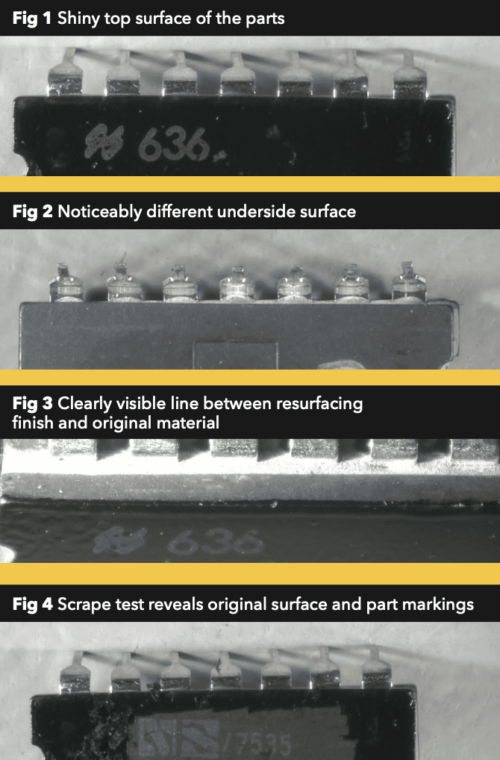 Princeps demonstrates that even when something is obviously wrong, the origins of some suspect parts are harder to positively identify than others
Princeps demonstrates that even when something is obviously wrong, the origins of some suspect parts are harder to positively identify than others
The parts in question were sourced from a European broker since the component was made obsolete back in the 1980s. The only stock available was this 1986 ‘vintage’. However, on receipt, it became immediately obvious the parts were not as they should be.
The unusually shiny top surface was the first clue (Fig 1); the obvious difference between top and bottom surfaces (Fig 2) was further giveaway; and the clear line of resurfacing material along the side of the part (Fig 3) provided the ‘smoking gun’ that confirmed the parts had been resurfaced at some point in their long life.
A quick scrape with a scalpel revealed the original surface and part markings (Fig 4). Based on those markings, it seemed like the parts were in fact even older than expected— originally coming off a production line in 1975.
It took a while to identify the logo. It appeared to be a very early version of the National Semiconductor logo in use throughout the ‘60s and early ‘70s and replaced by the stacked N/wave logo towards the end of 1975.
Princeps doesn’t often see museum pieces like this in its lab and it was an engaging diversion to try to establish the history associated with this vintage part. As ever, the parts were rejected as suspected counterfeit, reported via the ERAI and removed from the supply chain.
